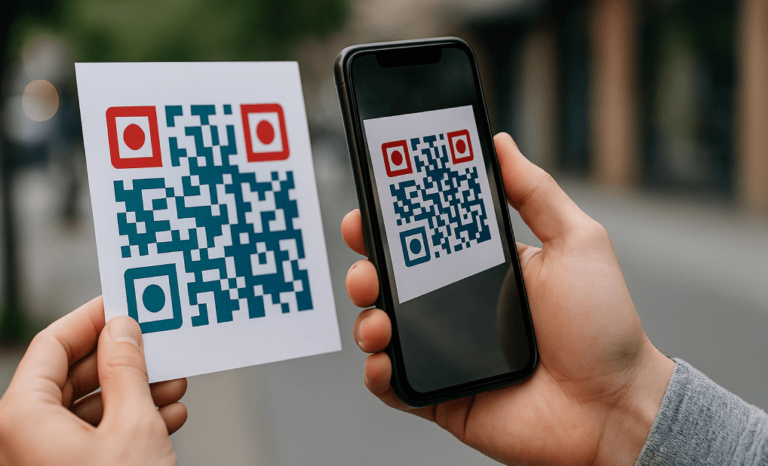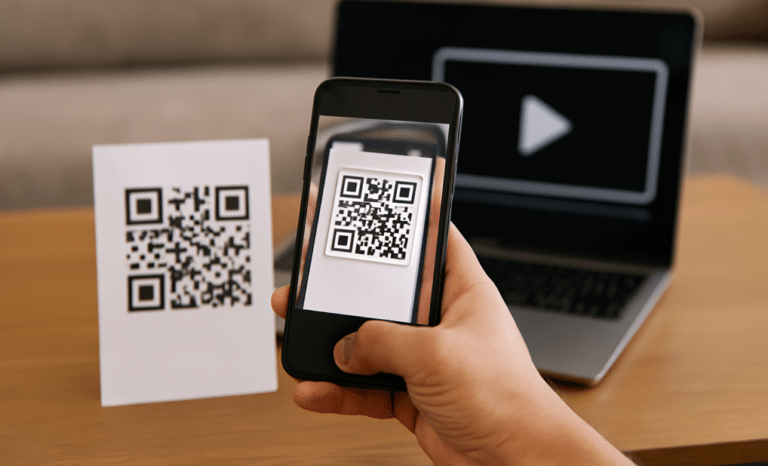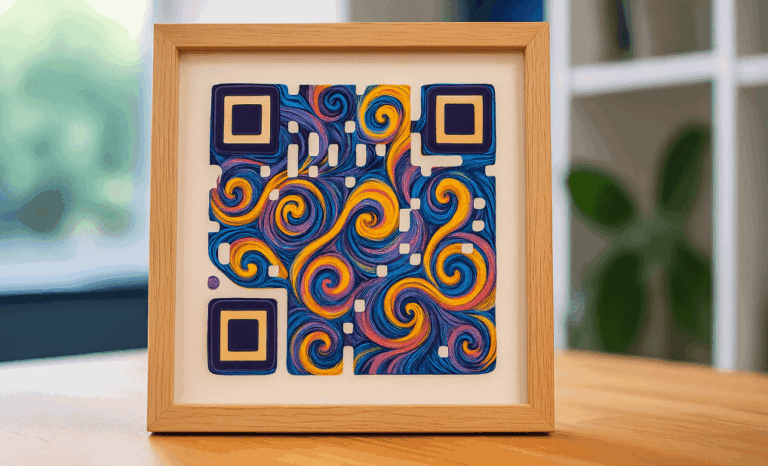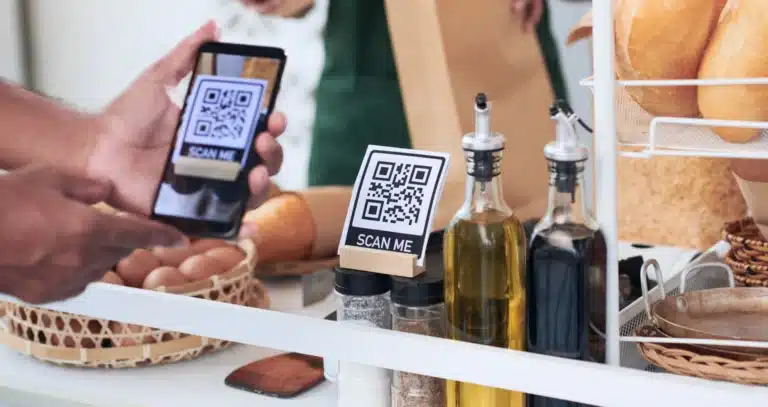QR codes have become a vital part of modern marketing, and colored QR codes seamlessly connect physical materials to digital content in a more engaging way. While most QR codes are black and white, adding color can make your codes more visually appealing, help reinforce brand identity, and increase user engagement. QR Code KIT’s dynamic QR code generator makes it easy to customize your QR codes with colors, logos, and call-to-action (CTA) frames, giving you full control over their design.
In this article, we’ll cover the best QR code color combinations, why color matters, and how to use QR Code KIT to create stunning custom QR codes that lead to more scans and drive conversions.
Why color matters in QR codes
Color can influence perception, create emotional connections, and enhance brand recognition. When used correctly in QR codes, color can make your QR codes visually appealing and memorable. However, the wrong color choices can lead to scanning issues, reducing the effectiveness of your marketing campaigns.
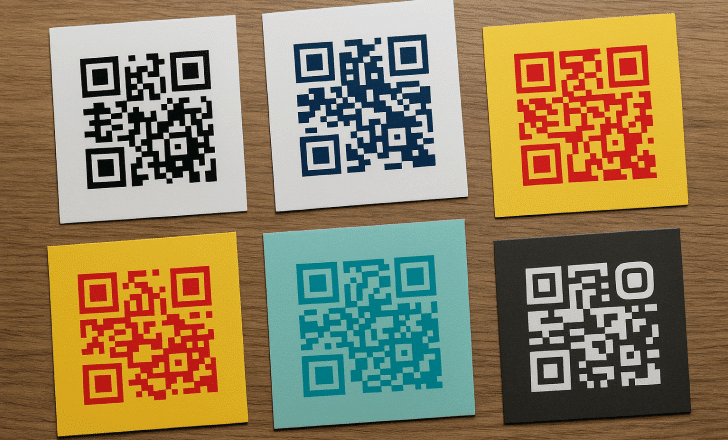
Key benefits of using colored QR codes
- Brand recognition – Consistent use of brand colors in your QR codes reinforces your company’s visual identity. This helps consumers associate the code with your brand at a glance.
- Improved user engagement – Eye-catching designs naturally attract more attention, leading to higher scan rates.
- Enhanced marketing impact – Customized QR codes can match the tone of your campaign, making them more impactful and aligned with your message.
- Greater flexibility – Color options allow you to adapt QR codes to different marketing materials, from business cards to billboards.
Key considerations for choosing QR code colors
- High contrast for easy scanning
QR codes rely on contrast to be easily recognized by phone cameras and QR scanning apps. Dark colors for the data pattern and light colors for the background are ideal for ensuring quick and accurate scanning. - Avoid light colored codes on light backgrounds
Light-on-light color combinations can be hard to read, especially in varying lighting conditions. If your QR code is light, make sure it sits on a darker background for optimal readability. - Think about color psychology
Colors can evoke emotions. For example, blue signifies trust and professionalism, making it ideal for financial services. Red, on the other hand, evokes urgency and excitement, perfect for limited-time offers. Choose colors that match your brand’s identity and the mood you want to convey. - Test for scannability across devices
Different smartphones and scanning apps may handle colors differently. Always test your designs on multiple devices to ensure consistent scannability.
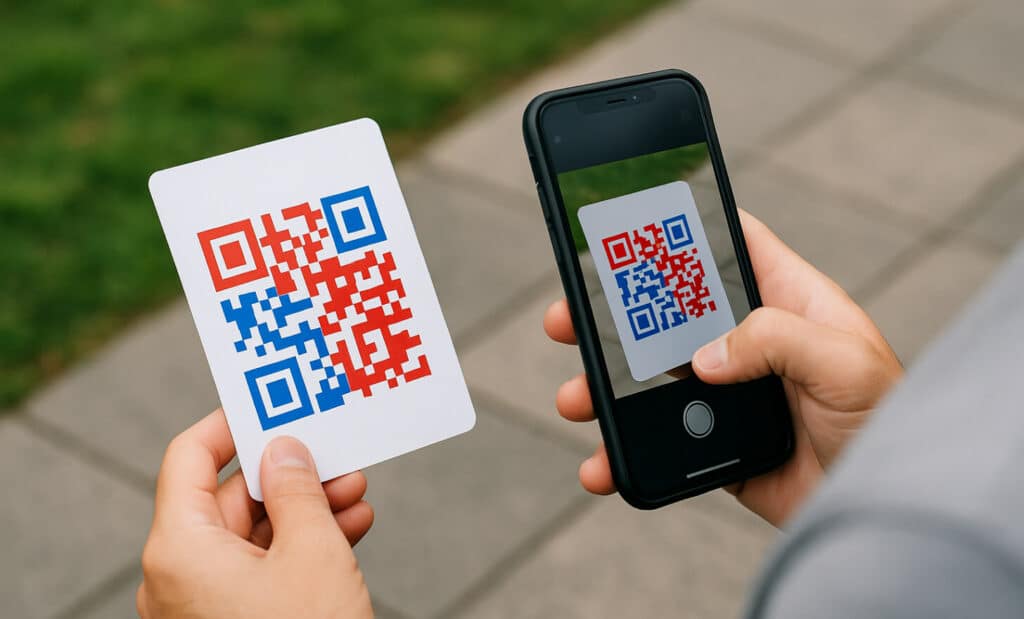
Best QR code color combinations
1. Classic black and white
This remains the most reliable and widely recognized QR code color scheme. It provides maximum contrast and scannability, making it a safe choice for most applications.
2. Dark foreground with light background
This combination, using colors like navy blue, forest green, or deep purple on a white or pastel background color, ensures strong contrast and is ideal for professional branding.
3. Vibrant and high-contrast colors
Pairing bright colors like red and yellow or blue and white can create a striking effect. These combinations are great for grabbing attention in busy environments like trade shows or crowded public spaces, aligning perfectly with your campaign theme .
4. Monochrome with a twist
Using varying shades of the same color can add subtle sophistication while maintaining good contrast in your custom codes . For example, a dark teal data pattern on a light teal background creates a cohesive, professional look.
5. Inverted QR codes
While less common, inverted codes (light foreground on a dark background) can be visually striking. However, these require careful testing to ensure reliable scans and maintain QR code’s scannability .
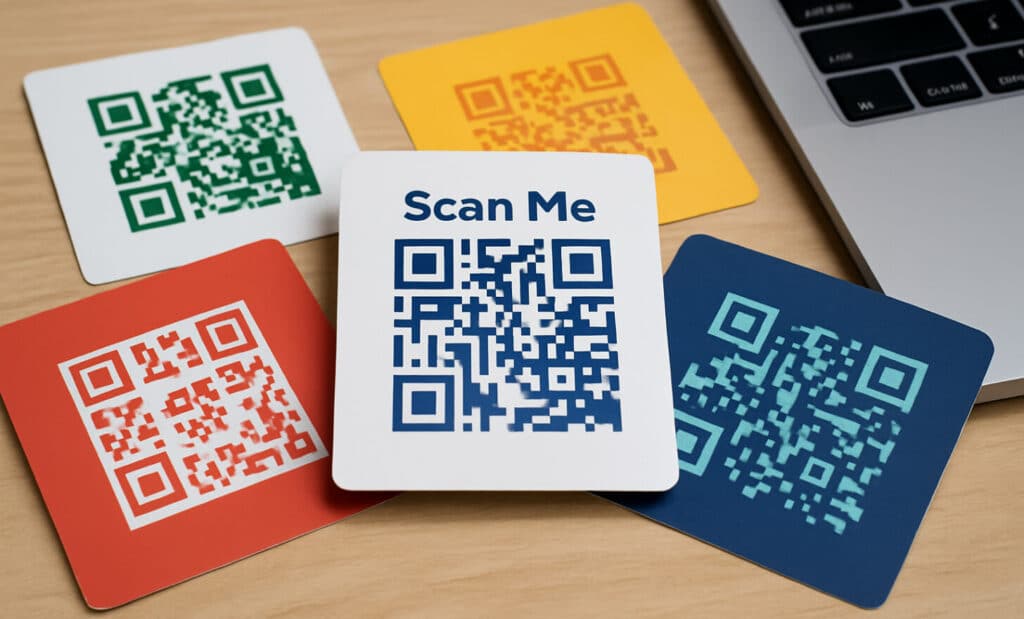
Advanced QR code design tips
1. Use brand colors
If you want your colored QR code to seamlessly integrate with your brand, use your company’s official color palette. This reinforces brand identity and ensures consistency across all marketing materials.
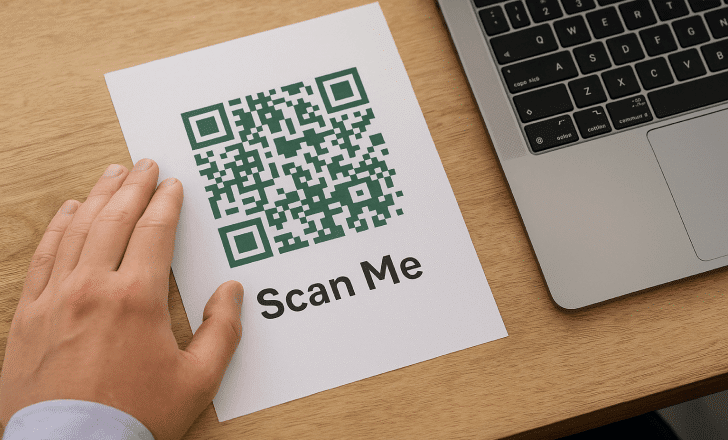
2. Add a logo for brand recognition
Incorporating your logo into the center of the QR code can increase brand recall and make your codes stand out. Just make sure the logo doesn’t interfere with the whole code’s scannability.
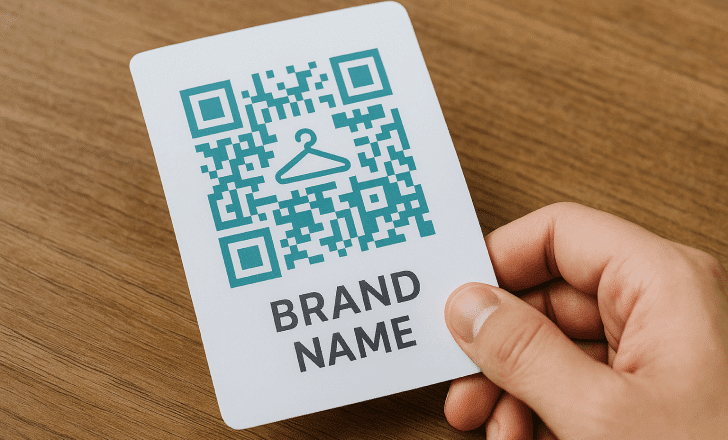
3. Experiment with data patterns
Most QR codes have a standard blocky appearance, but QR Code KIT allows you to experiment with different data pattern shapes. This QR code customization can make your QR codes look more modern and unique.
4. Use CTA frames
Adding a call-to-action frame around your QR code, like “Scan Me” or “Learn More,” can boost engagement by clearly signaling the action you want users to take and making your QR code stand out .
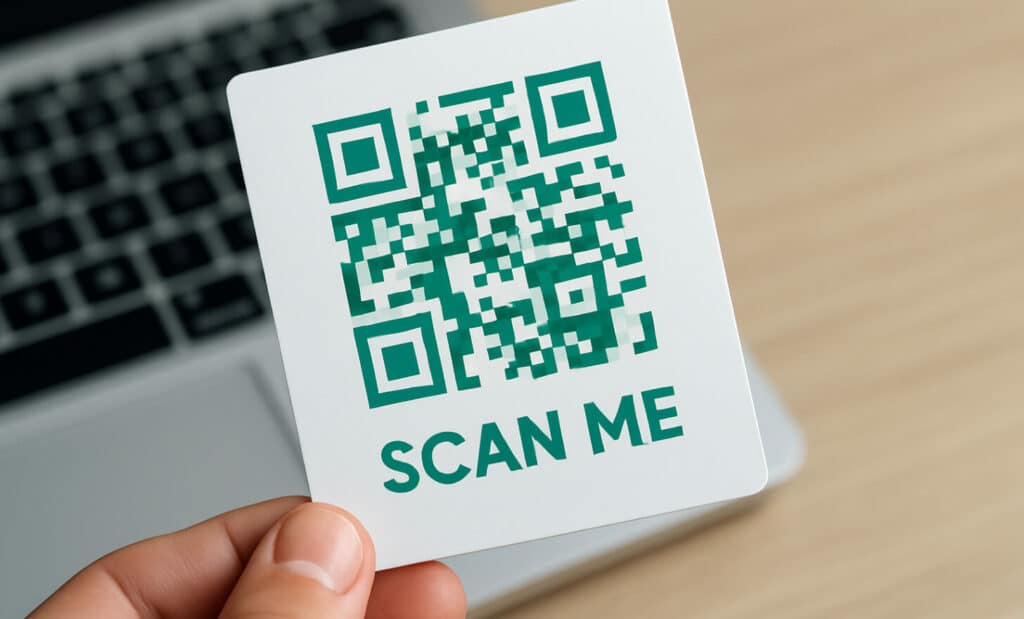
5. Transparent backgrounds
Using a transparent background can make your QR code blend seamlessly into various designs. This is ideal for complex layouts where a light colored background would look out of place.

How to customize QR codes with QR Code KIT
Creating a custom QR code with QR Code KIT is straightforward, offering numerous options for color customization, logo integration, and more:
- Choose your QR code type
Select the type of QR code you want to create. QR Code KIT supports a wide range of code types, including URLs, Wi-Fi access, text messages, email addresses, and even app deep links. - Add your content
Enter the data you want to share, whether it’s a website link, a phone number, or a promotional message. Double-check this content, as it is the core function of your QR code. - Customize the design
- Choose your colors – Pick a color scheme that aligns with your brand. Remember to use high-contrast combinations to ensure scannability.
- Add a logo – Upload your company logo for the center of the QR code, enhancing brand recognition.
- Select a CTA frame – Use call-to-action frames like “Scan Me” or “Learn More” to encourage engagement.
- Adjust the data pattern and eye styles – QR Code KIT allows you to modify the shape and style of the data pattern and eyes, giving your codes a truly unique look.
- Add a transparent background – Use a transparent background if your code will be placed over a colored or textured background, ensuring it blends seamlessly.
- Test for scannability
Before finalizing your design, test your QR code on multiple devices to ensure it scans quickly and reliably. This is especially important if you’ve used unconventional colors or complex designs.
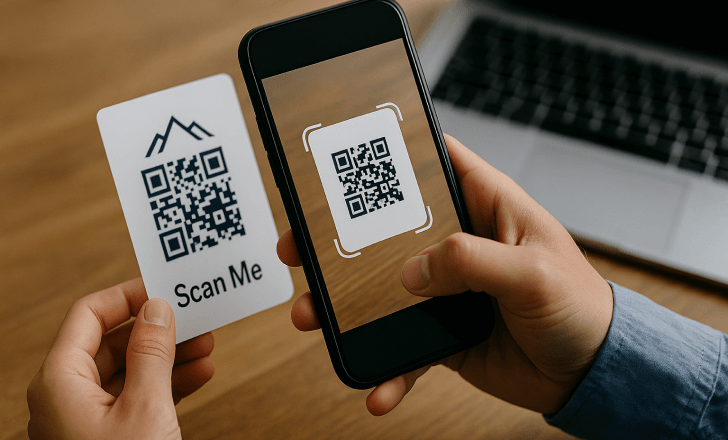
- Download and deploy
Once satisfied with your design, download the QR code in a high-resolution format for use in both digital and print marketing campaigns.
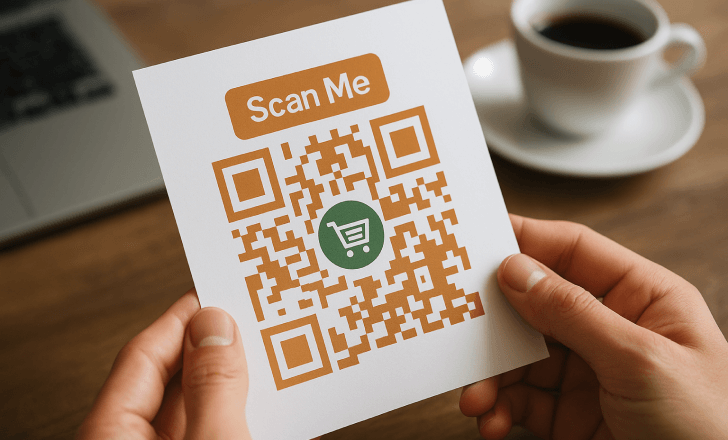
Conclusion
Customizing QR codes with QR Code KIT’s dynamic QR code generator can significantly enhance your marketing efforts. By choosing the right color combinations, adding logos, and using CTA frames, you can boost brand recognition, increase user engagement, and drive more conversions. Whether you’re promoting a product, linking to a mobile campaign, or enhancing restaurant menus, a well-designed QR code can make a big difference.
Start experimenting with your color palette today and watch your QR code campaigns come to life with QR Code KIT. The possibilities are endless, so get creative and make your QR codes truly stand out!
